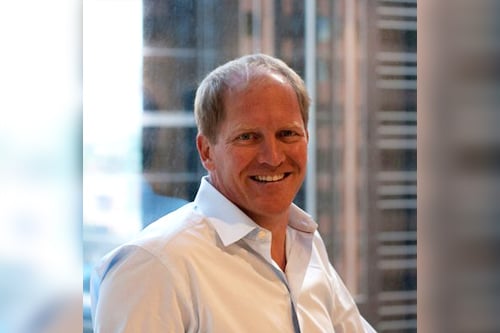Surmounting numerous hurdles, the first quant fund out of Alberta aims to help investors earn the long-term returns they need

With the explosion of Canada’s ETF industry in recent years, taking market share with a big launch is more challenging than ever for fund providers. It’s even more difficult for new entrants who also face numerous early-stage hurdles.
“Our chief investment officer, Art Johnson, has been working in the industry with experience in quantitative investing since 2003, but I’m new to this,” said SmartBe Wealth CEO Rod Heard, who co-founded the Alberta-based firm with Johnson in October.
Their first major difficulty was the regulatory process toward becoming an investment counsellor, fund manager, and exempt market dealer, which required the firm to acquire a significant body of knowledge. After getting registered, Heard and Johnson faced the challenge of creating a fund for the market — though that was made much easier with some outside help.
“We’re very fortunate to have secured an exclusive license agreement with Alpha Architect out of Philadelphia,” Heard said. “Wes Gray and Jack Vogel, the PhD holders behind the firm, saw a significant opportunity from Canada’s $1.53 trillion in actively managed mutual funds.”
The Philadelphia firm’s mandate is to deliver so-called “Affordable Alpha” from highly differentiated investment strategies at lower costs. Pledging to carry out that commitment on behalf of Canadian small investors, SmartBe created its flagship multi-factor ETF strategy: the SmartBe Global Value Momentum Trend Index ETF. Alpha Architect runs the quant strategy for the fund, while SmartBe handles the fund and the portfolio management side of things. Its portfolio is approximately equal exposure to Canadian, US, and international equities, and it is invested based on a series of value, momentum, and trend-following screens.
“We’re actually the second ETF to come out of Alberta, and the first quant fund to come out of the Alberta Securities Commission,” Heard said. “We worked closely with our legal in Ontario because of the experience the Ontario Securities Commission has with launching these types of funds. It’s amazing the complexity that has to take place in the back office in order to bring a fund that’s easy to invest in to life.”
Distribution is another formidable wall. Heard noted that Canada’s investment-product market, both for mutual funds and ETFs, is dominated by the Big Five banks. Educating advisors on the unique and differentiated aspects of a product and convincing them that it will create long-term benefits for clients can be problematic for small, independent players in a crowded, oligopolistic space. SmartBe’s multi-factor ETF was recently launched on the Aequitas NEO Exchange under the ticker SBEA, and the firm is now working hard to shout its message from the rooftops.
It might very well be time for investors to listen. With volatility simmering in the markets today, some may be convinced to try for outperformance through well-timed trades. But Heard pointed to a body of historical evidence that market timing “is a mug’s game,” and simply getting into the market and holding exposure to stocks is the most important thing.
“Being in the market with your desired factor exposure for five years would probably get you 60% of the way to a desired outcome, being in for 10 years would take it up to 70%, and so on,” he said. “Frankly, the volatility in the markets from a quant perspective made no difference to us, absolutely zero, because we’re not sure whether we’re coming in at a high point or a low point.”
As a proof point that the fund’s technical sorts are in working order, Heard noted that the fund’s trend-following algorithms had it holding on to high cash levels during its January 31 launch; going into February, the strategy’s Canadian momentum and value funds went half into equities. “So on the technical side, we just let the math do what it’s supposed to do. Our rules are transparent, and we just run by those rules,” he said.
When investors fail to time the ebbs and flows of the market, their natural response might be to buy high or sell low out of panic, which is why Heard said their fund is designed to minimize volatility. The strategy is going out with a standard deviation of roughly 8, placing it in the low-to-medium volatility band of the risk ranking spectrum. By putting investors on a smooth trajectory, the fund can help investors avoid bad decisions.
“Both the value and momentum factors have been superb in paying higher-than-market returns if you’re in it for long enough. And they’re negatively correlated, so it smooths out the ride,” Heard said. “Plus with our trend-following systems, we have air bags that get us into cash so our face isn’t ripped off in case the market takes a terrible turn.”



